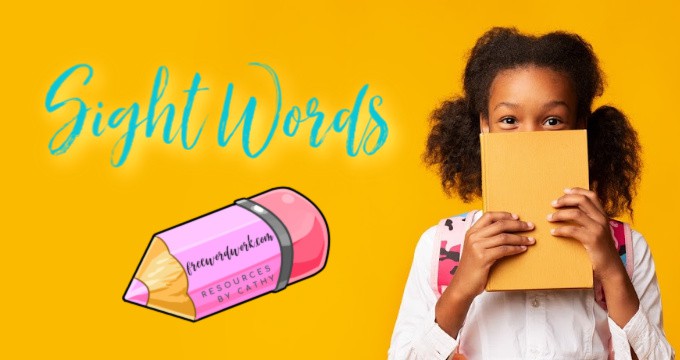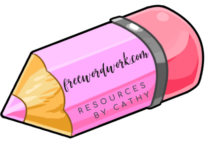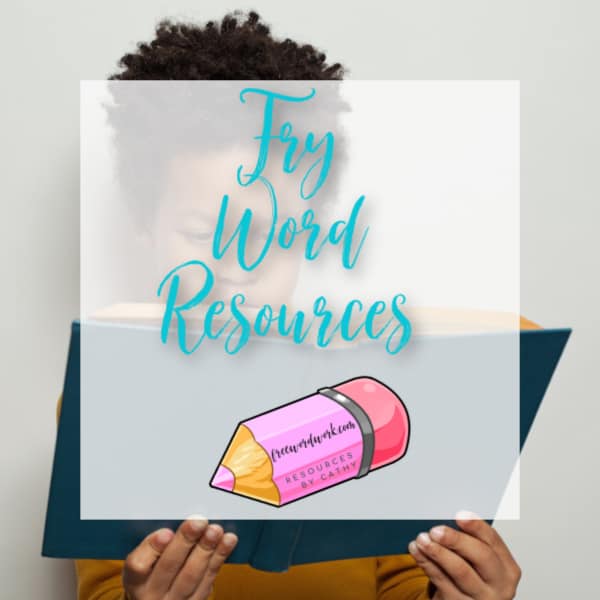Welcome to freewordwork.com where you will find free sight word resources for your classroom and home!

What are sight words?
Sight words are words that children should be able to read without sounding out. These are sometimes referred to as “snap words” – children should know them in a “snap.”
Just like math facts that have been mastered, students should be able to look at a word and be able to immediately recall how to read the word.
Why are sight words important?
Sight words are often (but not always) words that are not attached to meaning. Words such as the, of and to are included in these words. They are words that are hard for students to attach to visual or a picture.
When a student is learning the word dog, they can be presented with a picture of a dog to help with recall. Sight words are not always tied to a visual so memorization becomes even more important.
Where do I find sight word lists?
The two most well known sight word lists are Fry Words and Dolch Words.
Many times school districts or specific schools have already chosen to focus on one or the other. If this decision has not yet been made for you and you are looking to find a list for your own children, read below to help you choose the one that is best for your children.
Edward William Dolch is referred to as the father of sight words – it is believed that he was the first to use the term sight words.
Dolch Sight Words
- This list of sight words was compiled by Edward William Dolch in 1936.
- The most common words in children’s books at the time were compiled to create the Dolch list.
- Dolch’s list contains 220 “tool words” or “service words” and a separate list of 95 nouns.
- Dolch named the words “tool words” or “service words” because they are used when writing in all areas. He believed they were not only important for reading but also in science, social studies and other areas.
- Even though this list is old, it still contains between 50 and 75% of all words found in print.
- The Dolch words are divided into five lists. Each list is titled according to the grade level it should be mastered in.
Fry Sight Words
- The Fry sight words were compiled by Dr. Edward Fry.
- It was first created in the 1957 and then updated in 1980.
- The Fry list contains the most common 1,000 words found in print.
- The list does contain nouns unlike the Dolch Words.
- The first 25 words make up about 1/3 of all published text. The first 100 words make up half of all published text. The first 300 words make up 65% of all text.
- Students who have mastered all 10 Fry lists, will know 90% of all words they encounter in reading and writing.
- The words are broken into 10 groups. The first group contains the first 100 most common words, the second list contains the next 100 most common words and so on.
Obviously with more words, it will take longer for students to master the collection of Fry words. Here is the suggested break down of sight word mastery:
- 1st 100 – mastered in first grade
- 2nd 100 – mastered in second grade
- 3rd 100 – mastered in third grade
- 4th – 10th – mastered in fourth – fifth grades
- Often kindergarten teachers will focus on the first 25 to 50 words.
Is there a difference between sight words and high frequency words?
There is a slight difference between the terms sight word and high frequency word. A sight word is a word known on sight when students encounter it. A high frequency word becomes a sight word for a student when they know the word on sight.
Think of high frequency words as basic facts for reading. As teachers, we know that while students can determine a math fact by counting and thinking, it is often beneficial for children to have mastery of math facts. When they are solving a multiple digit addition problem, they can focus on the skill of regrouping instead of spending time solving the basic facts involved.
Sight words are similar. Many times students can sound out the sight words and this works for early readers. However, it can slow down student reading. The choppiness of this reading can lead to comprehension loss as students spend more time decoding words than focusing on meaning.
Helping students build a base of sight words can be beneficial in helping them become better readers.
While students should know the words on sight, it can be challenging because of the fact that the words often lack meaning. We often use strategies such as adding pictures or actions to help students learn new words. Because the words do not have meaning on their own, get creative when helping students master these words.
Just like basic facts, simply memorizing a list of words might not be engaging for all students. Freewordwork.com will work to build a collection of resources that will help you make this process better for students. You will find a range of games and centers for students to use when practicing. To benefit teachers, you will also come across a selection of tracking and assessment resources.
Grab your free sight word resources here:
***April 19, 2020: Fry Word Lists and Dolch Word Lists available now. Additional resources coming soon!


